Overview
Have you ever wondered how equipment manufacturers can really boost their game in today's digital world? Well, the article dives into the key benefits of SAP eCommerce, showing us how it can supercharge operational efficiency, enhance customer engagement, and ramp up sales performance.
- Tools like Equip360 are highlighted as game-changers, making processes smoother and giving real-time data access.
- This means manufacturers can not only keep up but thrive in a competitive landscape.
Just think about it: with improved metrics and higher customer satisfaction reported by users, it's clear that these tools are making a significant impact.
So, if you're in the manufacturing sector, it might be time to explore how SAP eCommerce can transform your operations. What do you think? Are you ready to take the leap into this digital transformation?
Introduction
Have you noticed how quickly the equipment manufacturing landscape is changing? It’s all about efficiency and engaging customers in a digital-first world. As businesses strive to optimize their operations, SAP eCommerce solutions are stepping up as real game-changers. They provide manufacturers with the tools to streamline processes, personalize customer experiences, and adapt to market demands.
But let’s be real—the road to successfully implementing these solutions isn’t always smooth. There are challenges to navigate, from understanding cost implications to tackling the complexities of adopting new technology. So, how can manufacturers not just survive, but truly thrive in the competitive B2B eCommerce space? It’s a question worth exploring!
GenAlpha Technologies: Equip360 for Enhanced B2B eCommerce Performance
Equip360 stands out as a cutting-edge B2B eCommerce platform designed specifically for producers and distributors. It's all about making inventory management easier and boosting those all-important digital sales. With real-time data and analytics at your fingertips, Equip360 helps businesses streamline their online transactions, creating a smooth purchasing experience for customers.
Think about it: features like interactive parts catalogs, secure ordering, automated order processing, and integrated relationship management not only enhance operational efficiency but also empower producers to significantly elevate their online presence and effectiveness in the marketplace.
Success stories from various manufacturers really highlight how transformative Equip360 can be. For instance, many organizations that have embraced this platform report impressive improvements in their online performance metrics. A good number even see a noticeable uptick in customer engagement and satisfaction. Did you know that 60% of B2B buyers finalize their purchase decisions based on online content? Plus, 89% do their research online before buying, which really underscores how crucial Equip360's capabilities are in delivering accurate and engaging product information.
As we look ahead to 2025, Equip360 is continuously evolving, integrating updates that further enhance its online sales effectiveness. These updates are all about improving user experience and adding advanced features that respond to the ever-changing market needs. By choosing Equip360, producers not only streamline their operations but also position themselves competitively in the fast-growing B2B eCommerce landscape, where digital interactions are expected to account for 80% of revenue by 2025.
And let’s not forget, 66% of B2B eCommerce businesses say order fulfillment and tracking are their biggest headaches. Equip360 tackles these pain points head-on. Take De Klok Dranken, for example—they achieved an impressive 80% adoption rate after upgrading to this scalable eCommerce platform. This really shows how Equip360 can lead to significant gains in operational efficiency and sales performance. So, are you ready to take your online sales to the next level?
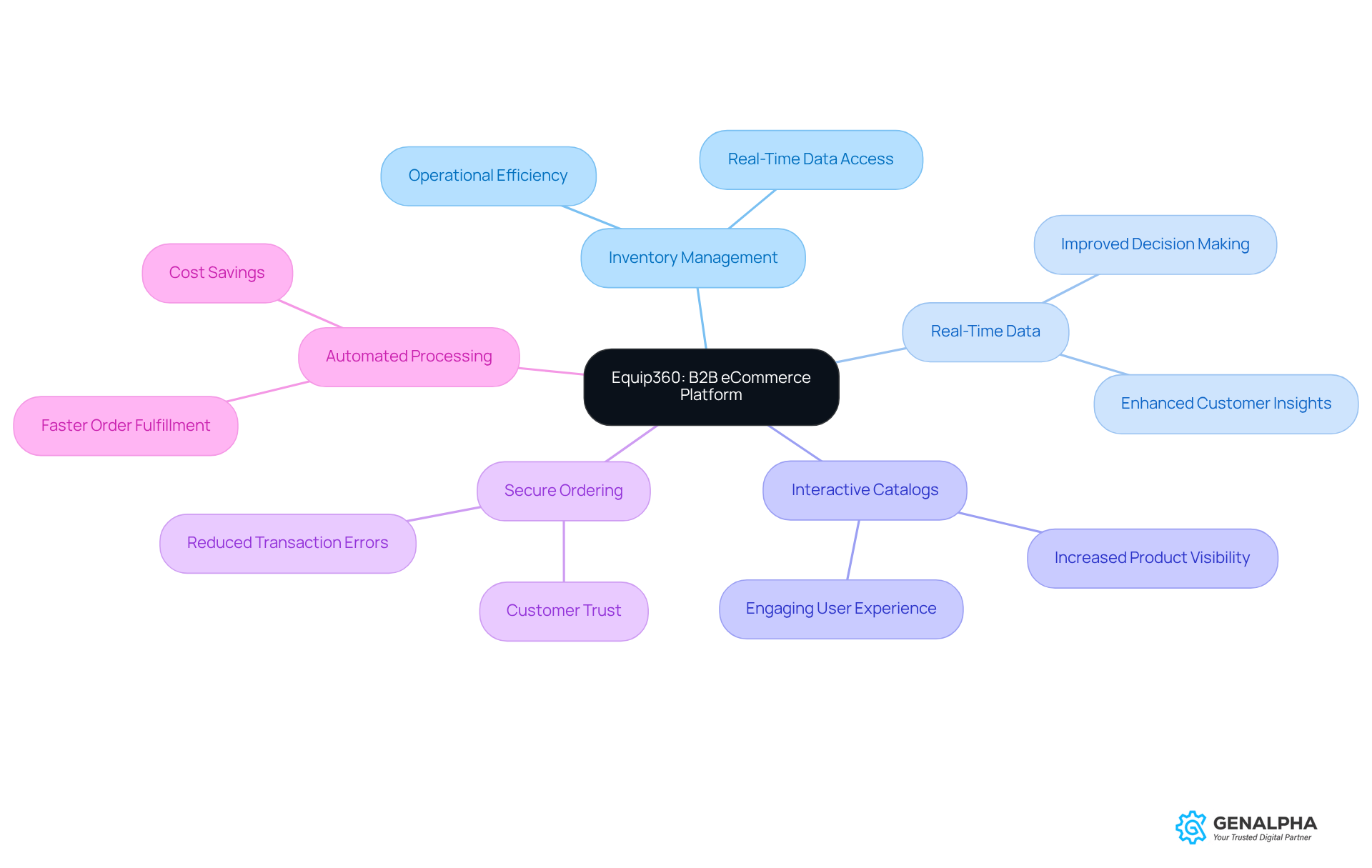
Omnichannel Commerce: Seamless Customer Engagement Across Platforms
Have you ever thought about how we shop today? Omnichannel commerce is changing the game for producers, allowing them to connect with clients on various platforms—think websites, mobile apps, and social media. This approach guarantees that no matter how you choose to interact, the experience is consistent and seamless.
By tapping into data from different touchpoints, manufacturers can personalize their marketing strategies and enhance customer support. This tailored approach doesn’t just make clients happier—did you know that 86% of customers are willing to pay more for a better experience? Plus, it drives repeat business; 60% of consumers become loyal buyers after a personalized shopping experience.
And it gets better! Companies that focus on customer experience see an impressive 80% increase in revenue. That’s a clear win for seamless engagement! Take, for example, brands using augmented reality for real-time support. They’re not only cutting down resolution times but also building client trust.
As consumer expectations continue to shift, it’s crucial for manufacturers to embrace omnichannel strategies. This is how they can stay competitive and meet the growing demand for personalized, consistent interactions. So, are you ready to dive into this new era of shopping?
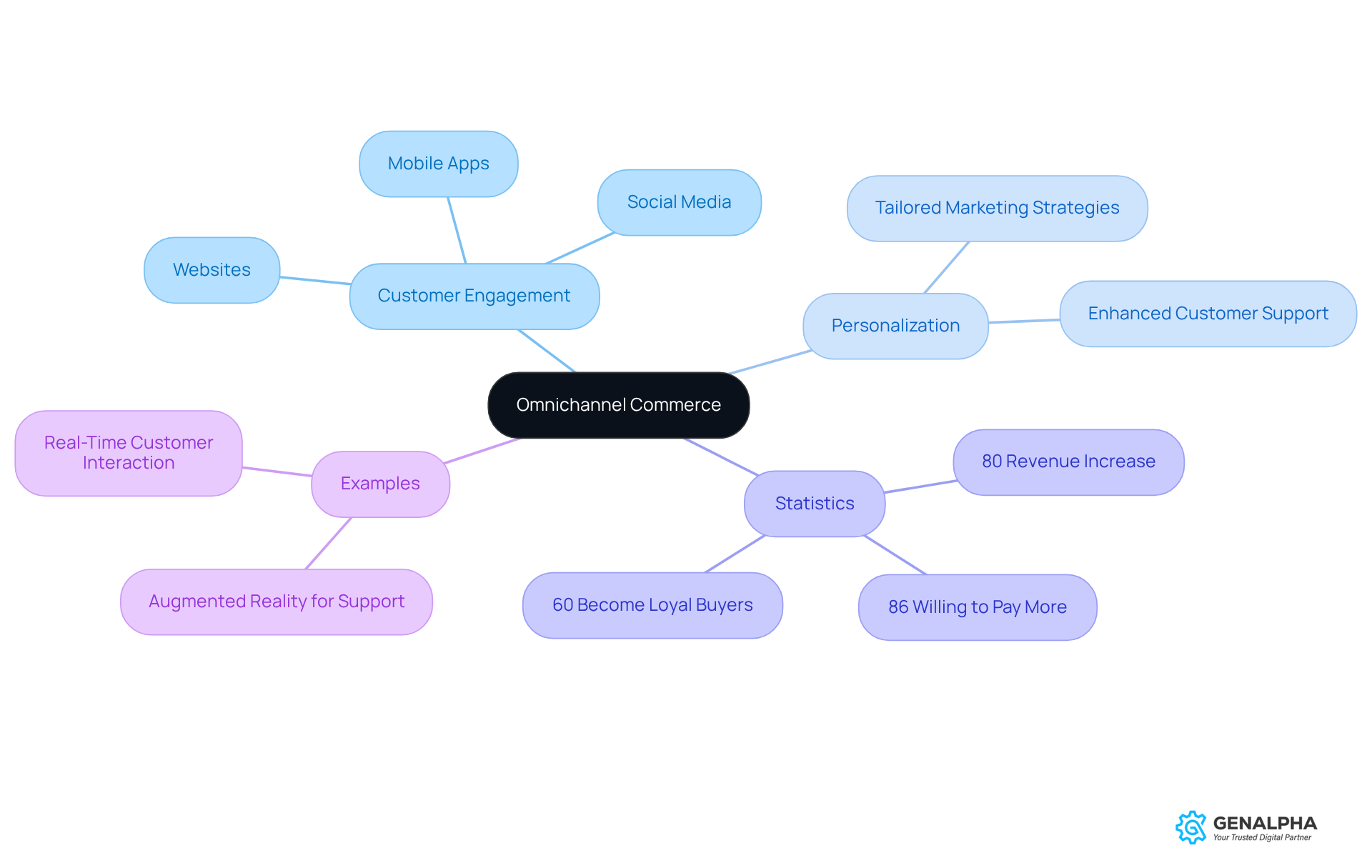
Personalized Customer Experience: Tailoring Interactions for Increased Satisfaction
Have you ever thought about how a personalized client experience can really change the game? It’s all about tailoring those interactions to fit what clients prefer and how they behave. Manufacturers can tap into data analytics to get a clearer picture of what clients need, leading to solutions that feel just right.
For instance, imagine getting product recommendations that actually match your tastes, or receiving marketing campaigns that feel like they were designed just for you. Customized client support can make all the difference too! By crafting experiences that are not only relevant but also captivating, producers can boost customer satisfaction and build loyalty.
And let’s be honest, who doesn’t want to see greater revenue and retention rates? So, how are you planning to personalize your approach today?
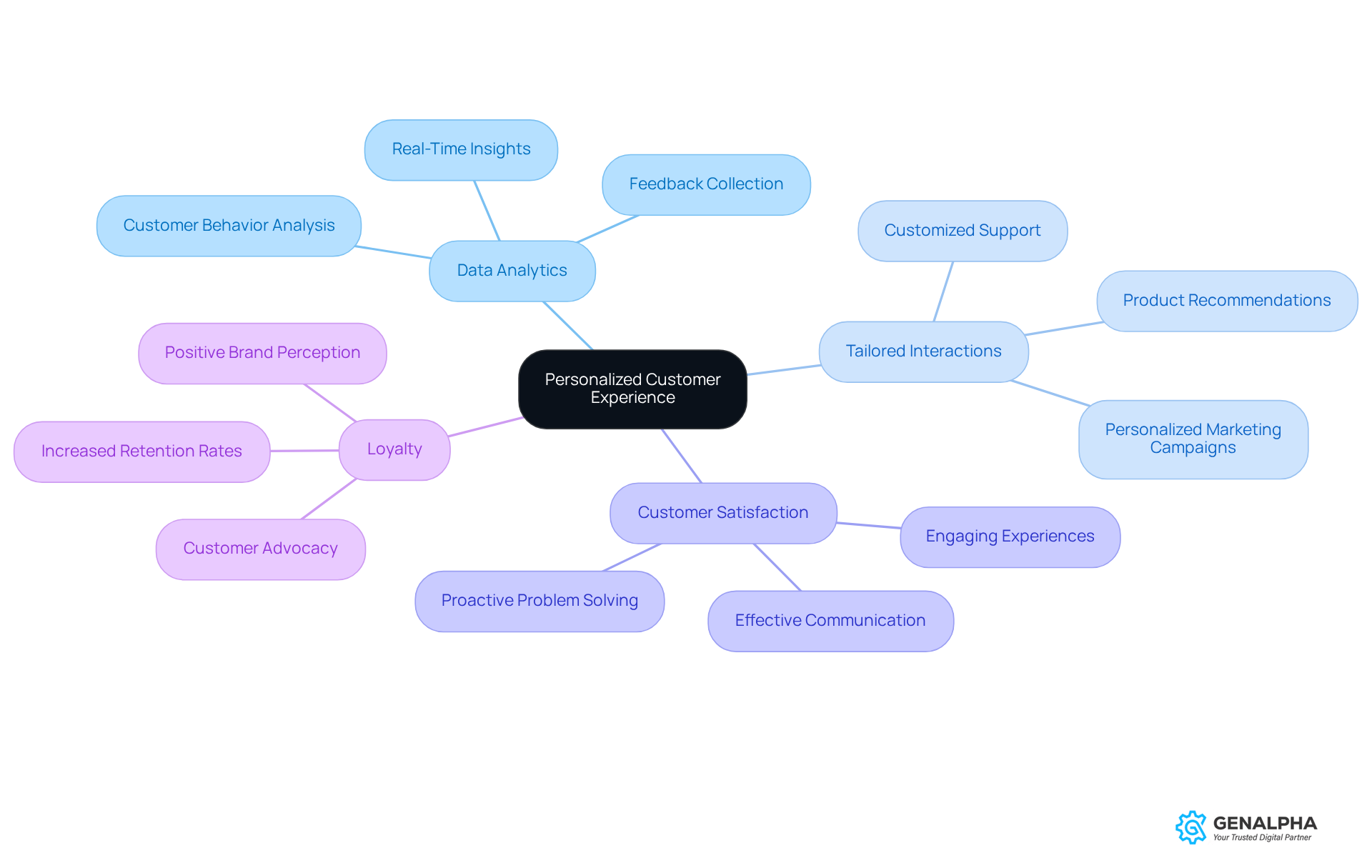
Scalability: Adapting to Business Growth and Market Changes
Scalability is all about a business's ability to grow and adapt its operations without losing performance. For equipment producers, this means having robust systems that can handle increased demand—whether that's by diversifying product lines or venturing into new markets. Digital solutions like Equip360 are designed to scale right along with the business, allowing manufacturers to effortlessly add new features, integrate more sales channels, and manage larger inventories without major hiccups. This kind of adaptability is crucial for staying competitive in a fast-changing marketplace.
Did you know that research from McKinsey shows companies that overlook scalable architecture can see revenue losses between 8% and 28%? This is often due to lagging user experiences and application slowdowns. Plus, a global study by IDC found that 81% of IT decision-makers reported lasting damage to their brand reputation and customer loyalty after significant outages. So, investing in scalable tech solutions not only boosts operational efficiency but also shields against potential hurdles that could slow down growth.
By embracing advanced technologies, producers can create flexible infrastructures that respond to market shifts and changing consumer demands. The three key dimensions of scalability in manufacturing—capacity, cost, and flexibility—are vital for ensuring businesses can adapt without sacrificing quality or racking up expenses. This proactive approach to scalability positions businesses to thrive in the digital economy, ultimately driving sustained growth and profitability. Are you ready to take your business to the next level?
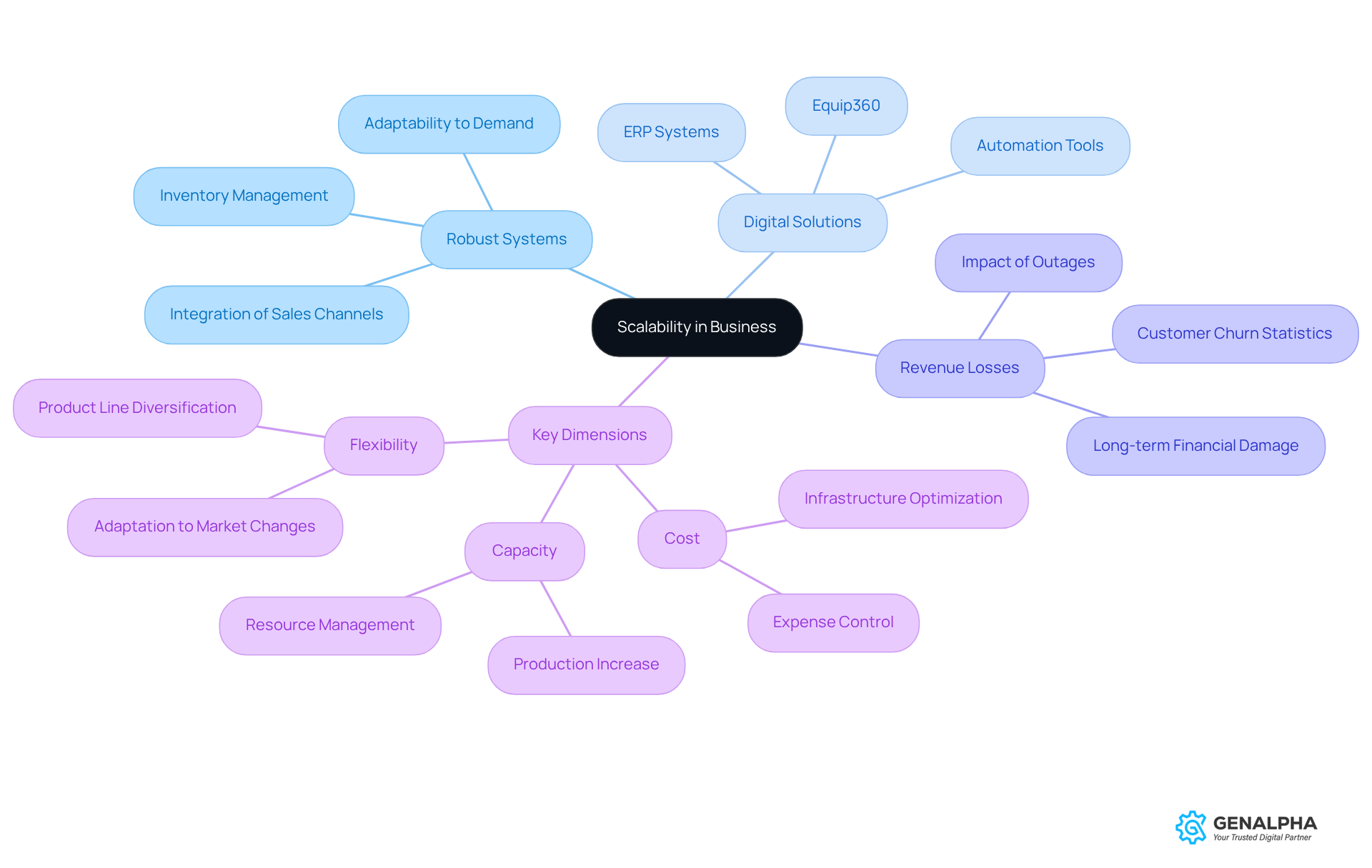
Advanced Order Management: Streamlining Sales Processes for Efficiency
Have you ever thought about how advanced order management systems can really transform the way manufacturers handle their sales processes? These systems are game-changers, automating essential tasks like order entry, inventory tracking, and fulfillment. Imagine having real-time insights into your inventory levels and order statuses—this means businesses can quickly respond to inquiries and significantly cut down on lead times.
By reducing manual errors and boosting operational efficiency—"automation minimizes errors that often occur in manual data entry and processing"—manufacturers can enhance customer satisfaction and encourage repeat business. Plus, when you integrate order management with SAP e-commerce platforms, it creates a smooth flow of information. As one expert put it, "automation provides real-time visibility into spending, supplier performance, and market trends," which further streamlines the sales process.
For instance, companies that have embraced automated order processing have reported lead time reductions of up to 25%. Those who’ve implemented procurement automation have seen a 25% drop in procurement costs and a 15% reduction in procurement cycle time. This means that producers not only improve their operational capabilities but also position themselves for ongoing growth in a competitive market.
So, how can you maximize these benefits? It’s simple: regularly assess your current order management processes for potential automation opportunities. What steps can you take today to start this journey?
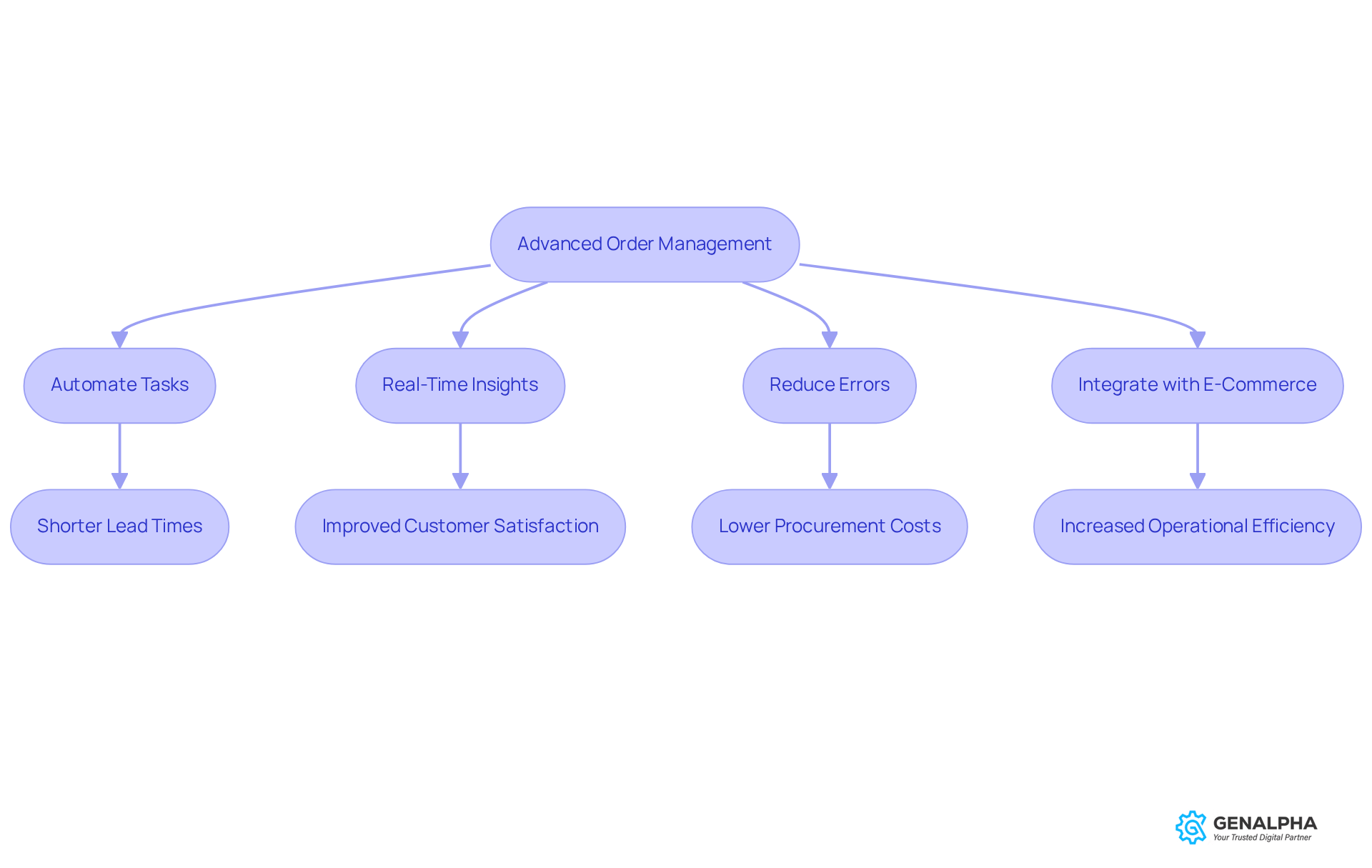
Extensive Integration Capabilities: Connecting with Existing Systems for Efficiency
Manufacturers can really boost their operational efficiency by tapping into the power of integration. Connecting new digital solutions with existing systems, like ERP and CRM platforms, can make a world of difference. This connectivity allows for seamless data flow, which minimizes errors and optimizes processes. For example, when you integrate SAP e-commerce platforms like Equip360 with legacy systems, producers can effectively leverage existing data. This leads to better customer insights and smoother operations.
Did you know that 95% of companies see process improvements after implementing ERP systems? That really highlights the value of these integrations! This holistic approach not only improves data accuracy but also supports better decision-making and operational agility.
As Alena Arsionava, a Technology Evangelist, puts it, 'SAP e-commerce integrations streamline operations by automating processes, synchronizing data, and enhancing functionality, ultimately improving efficiency and driving business growth.' So, what does this mean for producers? They can respond more quickly to market needs and boost overall efficiency, setting themselves up for sustainable growth in a competitive landscape. Isn't that exciting?
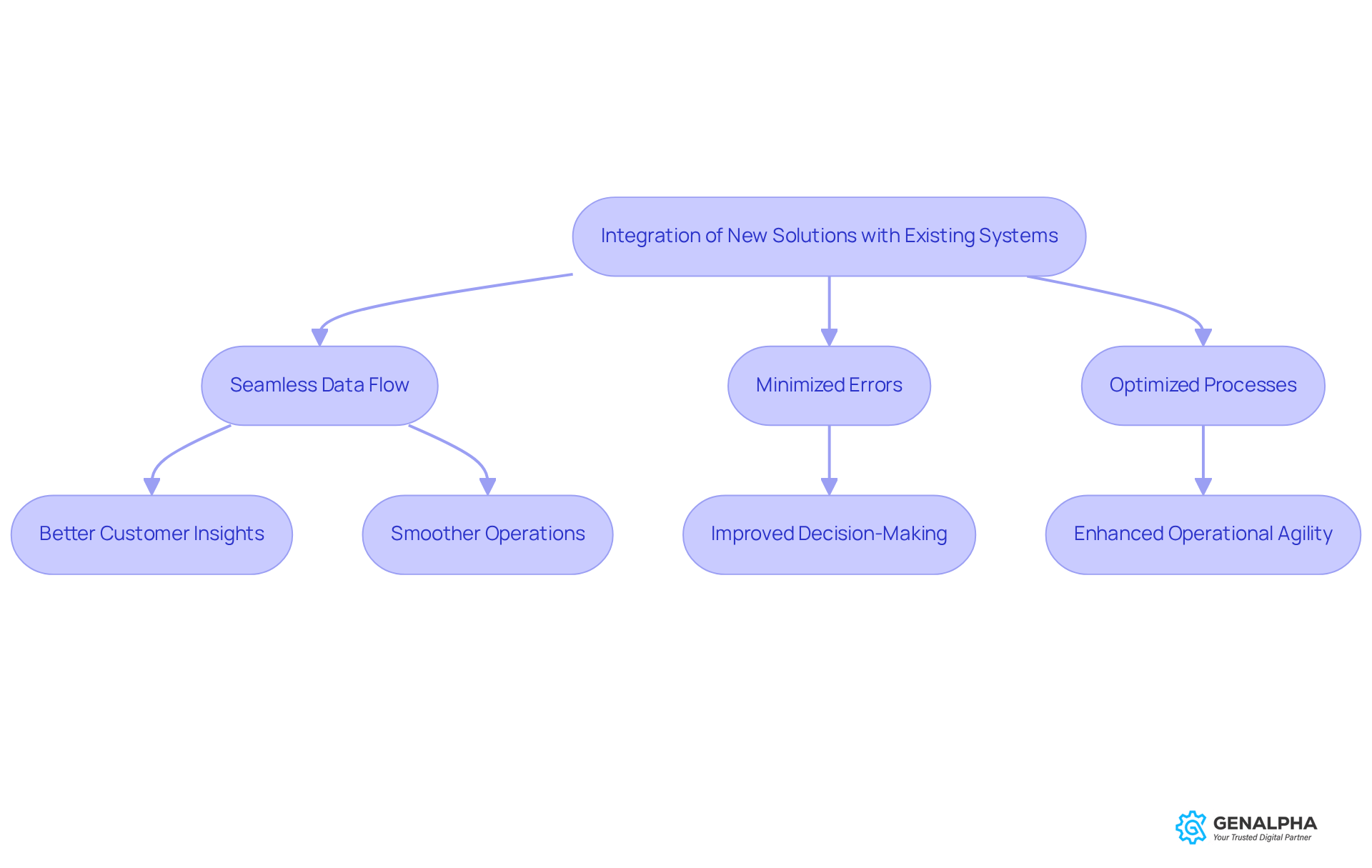
Cost Considerations: Understanding Implementation and Maintenance Expenses
When thinking about implementing SAP eCommerce solutions, it’s essential for producers to weigh both the initial setup costs and the ongoing maintenance expenses. This includes everything from software licensing to integration, training, and support. Sure, the upfront investment might look hefty, but the long-term perks—like improved efficiency, increased sales, and happier customers—often make it worth it. For instance, companies that jump on the automation train in their eCommerce workflows see an impressive 80% boost in lead generation and a 45% increase in ROI. That really highlights the financial benefits of these solutions!
But here’s where it gets interesting: manufacturers should really dive into a thorough cost-benefit analysis to make sure their chosen solution fits their financial goals and operational needs. However, it’s worth noting that only 28% of marketers have a solid system for measuring ROI. This points to the challenges producers face when trying to evaluate their investments effectively.
On the flip side, 72% of successful eCommerce businesses are already leveraging automation in their workflows. This really strengthens the argument for automation as a must-have in SAP eCommerce solutions for producers. So, what’s holding you back from exploring these options? Let’s make sure you’re not missing out on the advantages that could drive your business forward!
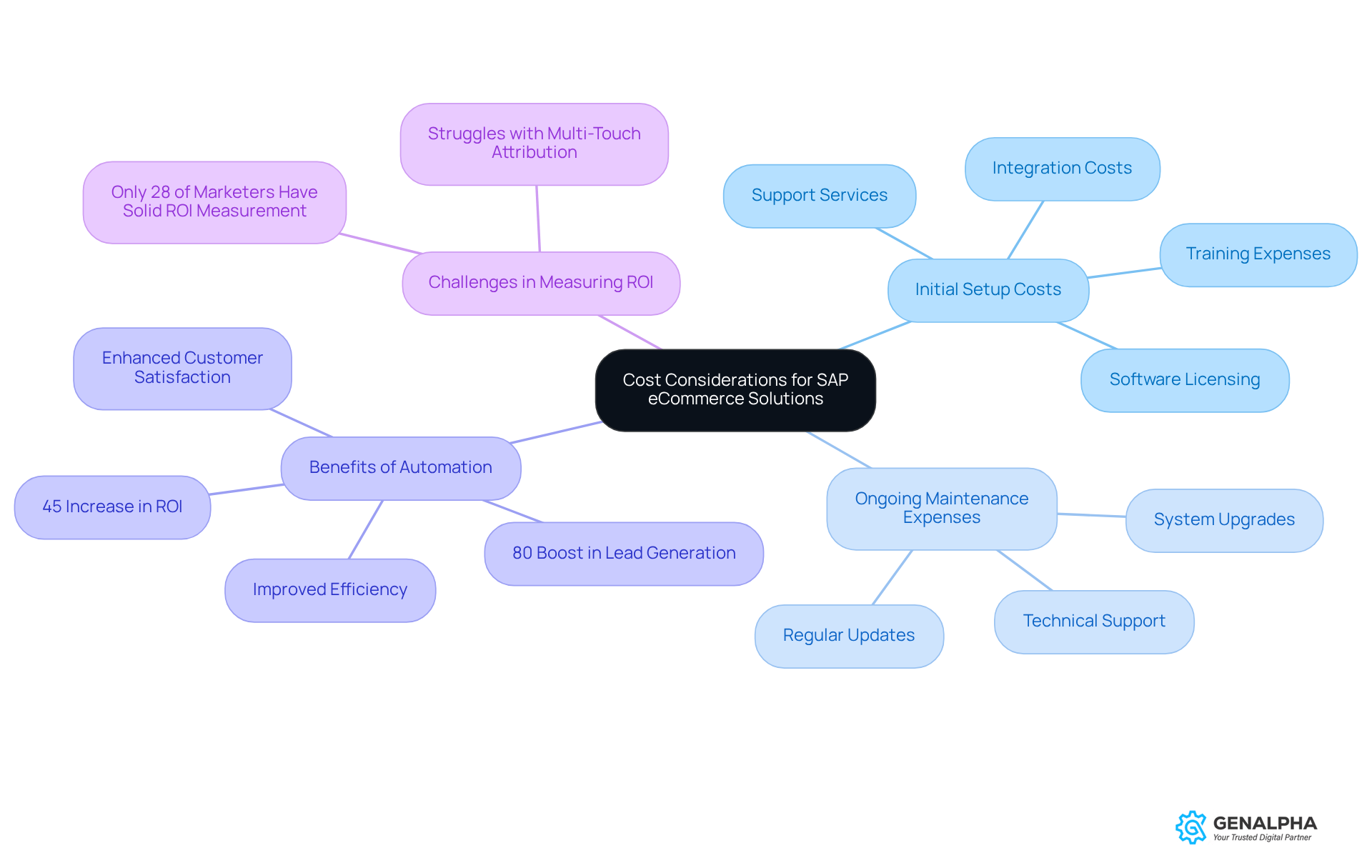
Learning Curve: Navigating the Challenges of New Technology Adoption
You know, adopting new technology in manufacturing can really feel like climbing a steep hill, can't it? If we don’t manage it well, it can throw a wrench in our operations. That’s why comprehensive training programs are crucial—they equip our team with the skills they need to navigate these new systems smoothly. Did you know that research shows 70% of digital transformations fail because employees resist change? This really highlights how important it is to tackle this issue head-on. By investing in solid training initiatives and offering ongoing support, we can boost our chances of successfully adopting new technology.
Involving our employees in the implementation process is another great way to ease resistance. When they feel a sense of ownership, it makes a big difference. Take ATS Industrial Automation, for example. They helped a major automotive producer with modular battery assembly systems, and their effective training programs proved that practical experience and continuous learning lead to better operational efficiency and employee engagement. Plus, with 53% of organizations saying they need to update workforce skills due to tech advancements, proactive training is more important than ever.
So, by addressing the learning curve upfront, we not only smooth out transitions but also set ourselves up for long-term success in this digital age. To really make our training programs effective, let’s take a moment to evaluate what we currently have and align it with the latest tech trends. This way, we can ensure our employees are ready to tackle the future!
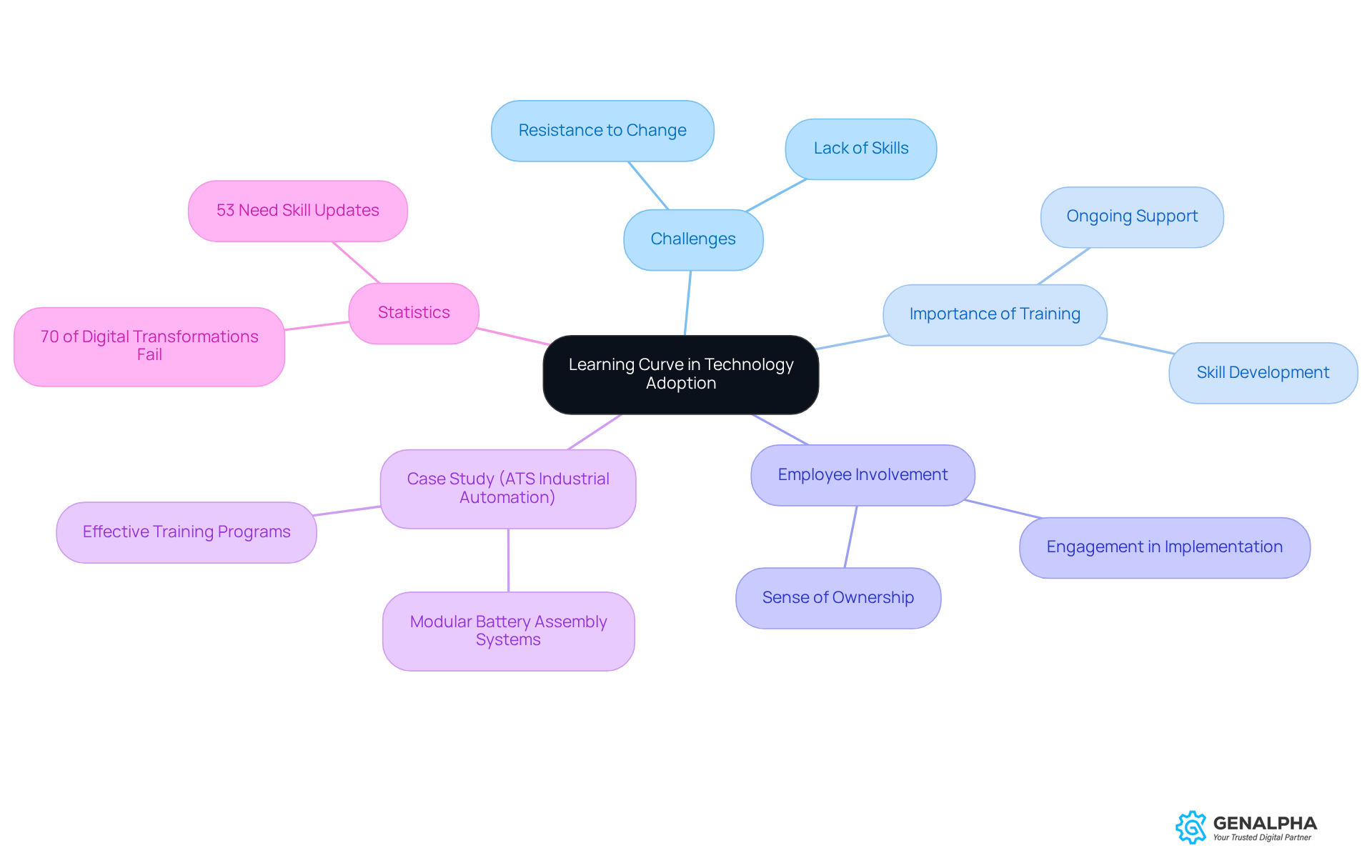
Customization Challenges: Tailoring SAP Solutions to Unique Business Needs
SAP solutions offer some pretty impressive customization capabilities, but let’s be real—tailoring these systems to fit specific business needs can be tricky. Manufacturers really need to take a good look at what they require and work closely with implementation partners. This teamwork is crucial to make sure that any customizations actually boost system performance and usability instead of complicating things.
Finding the right balance between customization and standardization is key to keeping operations running smoothly. By honing in on the most critical features and functionalities, manufacturers can create a tailored solution that simplifies their business processes without adding unnecessary complexity. This not only enhances the user experience but also fits right into the growing trend of mass customization in manufacturing. Nowadays, companies are expected to deliver personalized products while still operating efficiently.
Take Neopharm, for instance. Their technological transformation shows how a unified platform can support multiple brands while still allowing each to maintain its unique identity. This really highlights the power of strategic planning in striking that balance. As James H. Gilmore points out, having conversations with clients to understand their needs is vital for figuring out which products will meet those demands. This underscores how important personalization is in today’s competitive landscape.
Moreover, as Adam Domagała notes, upgrades are more than just system updates; they’re essential for enhancing company sustainability, which is crucial for maintaining operational efficiency. And let’s not forget the agile methodology, as Katarzyna Grobler-Dębska emphasizes. It can significantly enhance ERP project development and implementation, giving manufacturers the flexibility to adapt to changing business needs.
Manufacturers also need to be aware of the unique challenges they face in demand forecasting for mass customization. This can make it even tougher to find that sweet spot between customization and standardization. So, what are your thoughts on how to navigate these challenges?
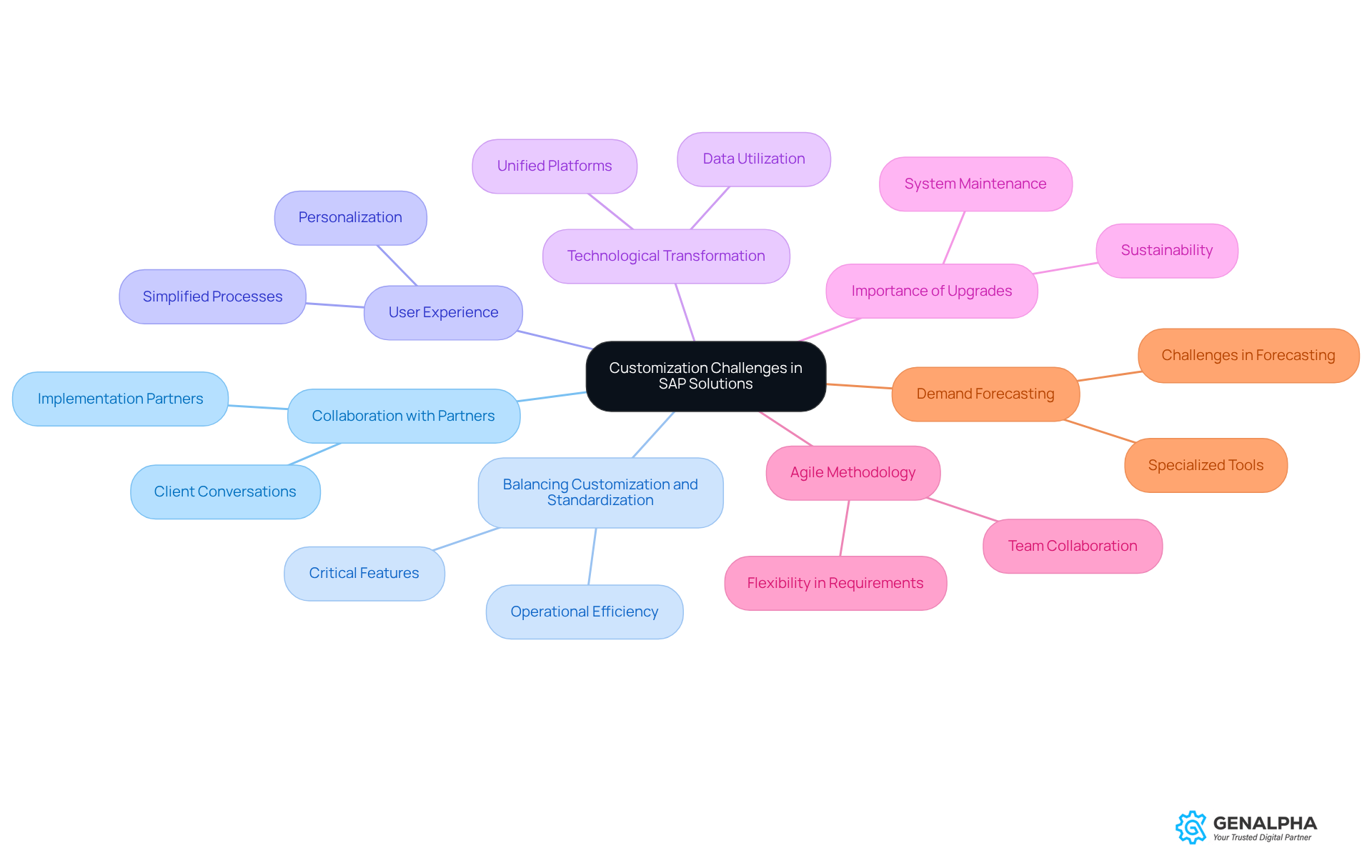
Overall Impact: Transforming Manufacturing and Distribution Through SAP eCommerce
Have you ever thought about how SAP e-commerce solutions are shaking things up in manufacturing and distribution? The impact is huge and comes with many benefits. By leveraging advanced tech tools, producers can achieve impressive operational efficiencies, enhance client engagement, and see sales grow. In fact, a striking 74% of manufacturers surveyed are looking to use generative AI to elevate their client experience. This clearly shows a trend toward digital transformation.
These solutions allow businesses to adapt swiftly to changing market conditions, streamline processes, and deliver exceptional client experiences. As the manufacturing landscape evolves, integrating SAP e-commerce solutions becomes essential for shaping the industry's future. It helps companies stay competitive and responsive to their clients' ever-changing demands.
Producers who have embraced digital transformation are seeing significant sales increases. Many are tapping into real-time data to improve inventory management and personalize client interactions. For example, a whopping 78% of producers plan to invest in supply chain planning software, which directly ties into optimizing inventory management. This strategic shift not only boosts operational performance but also nurtures stronger relationships with customers, ultimately driving profitability and market success.
However, let’s not overlook the challenges manufacturers face during this transition. Issues like labor market tightness and the need for new career pathways are critical for sustaining growth in our digital age. So, how can we navigate these challenges while reaping the benefits of digital transformation?
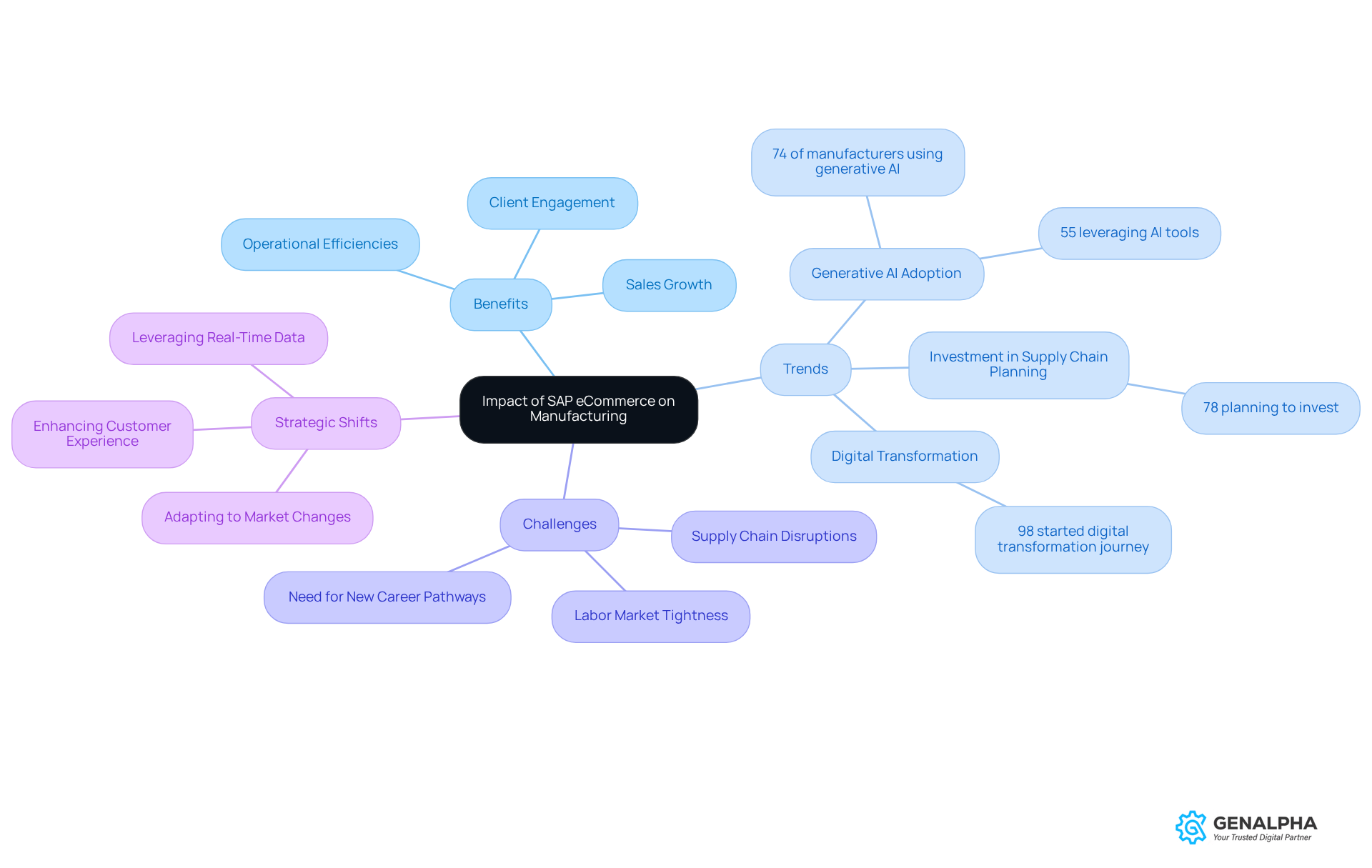
Conclusion
The transformative power of SAP eCommerce solutions, especially for equipment manufacturers, is truly remarkable. Imagine leveraging cutting-edge platforms like Equip360—this could be your ticket to significantly boosting operational efficiency, streamlining sales processes, and enhancing customer engagement. With real-time data analytics, advanced order management, and omnichannel strategies, your business is set to thrive in today’s digital marketplace.
Throughout our discussion, we’ve highlighted key benefits like:
- Scalability
- Personalized customer experiences
- Extensive integration capabilities
These factors not only pave the way for operational success but also help foster stronger relationships with your customers, ultimately driving sales growth. Plus, addressing challenges related to technology adoption and customization emphasizes how crucial strategic planning and employee engagement are in this digital transformation journey.
So, let’s wrap this up: shifting towards SAP eCommerce isn’t just a trend; it’s a necessity for manufacturers who want to stay competitive in an ever-evolving landscape. Embracing these solutions will not only enhance your business performance but also prepare your organization for future challenges and opportunities. The time to invest in digital transformation is now—are you ready to take the leap and unlock the full potential of your eCommerce capabilities?
Frequently Asked Questions
What is Equip360 and what does it offer?
Equip360 is a cutting-edge B2B eCommerce platform designed for producers and distributors, aimed at simplifying inventory management and enhancing digital sales. It provides real-time data and analytics, interactive parts catalogs, secure ordering, automated order processing, and integrated relationship management.
How does Equip360 improve online sales performance?
Equip360 enhances online sales performance by streamlining online transactions, improving operational efficiency, and empowering producers to elevate their online presence. It also helps businesses deliver accurate and engaging product information, which is crucial as 60% of B2B buyers finalize their purchase decisions based on online content.
What are some success metrics associated with Equip360?
Many organizations using Equip360 report impressive improvements in online performance metrics, increased customer engagement, and satisfaction. Additionally, businesses that adopt Equip360 can see significant gains in operational efficiency and sales performance.
How is Equip360 evolving for the future?
Equip360 is continuously evolving with updates that enhance online sales effectiveness, improve user experience, and add advanced features to meet changing market needs. This positions producers competitively in the growing B2B eCommerce landscape.
What challenges does Equip360 address for B2B eCommerce businesses?
Equip360 addresses major challenges such as order fulfillment and tracking, which 66% of B2B eCommerce businesses identify as their biggest headaches.
What is omnichannel commerce and how does it benefit producers?
Omnichannel commerce allows producers to connect with clients across various platforms such as websites, mobile apps, and social media, ensuring a consistent and seamless experience. This approach personalizes marketing strategies and enhances customer support, leading to increased customer satisfaction and loyalty.
What impact does a personalized customer experience have on business?
A personalized customer experience can significantly boost customer satisfaction and loyalty. It can lead to greater revenue and retention rates, as 86% of customers are willing to pay more for a better experience, and 60% become loyal buyers after a personalized shopping experience.
How can data analytics improve customer interactions?
Data analytics allows manufacturers to understand client preferences and behaviors, enabling them to tailor interactions and provide relevant product recommendations and marketing campaigns that resonate with customers.
What is the expected trend for digital interactions in B2B eCommerce by 2025?
By 2025, digital interactions are expected to account for 80% of revenue in the B2B eCommerce landscape, emphasizing the importance of platforms like Equip360 in enhancing online sales effectiveness.




